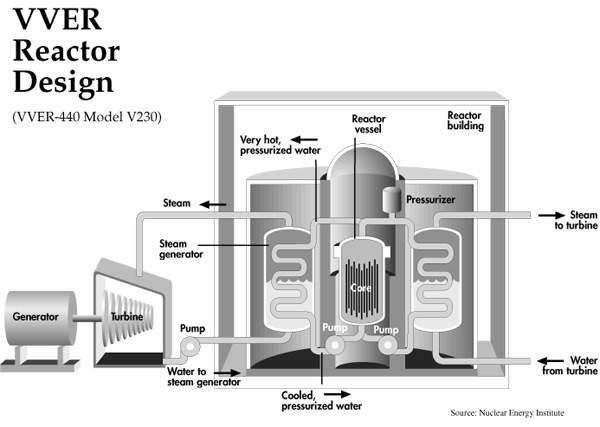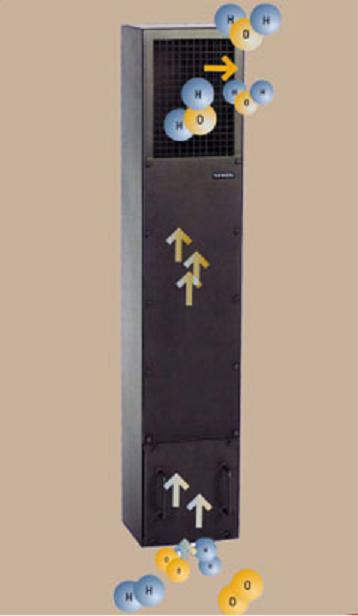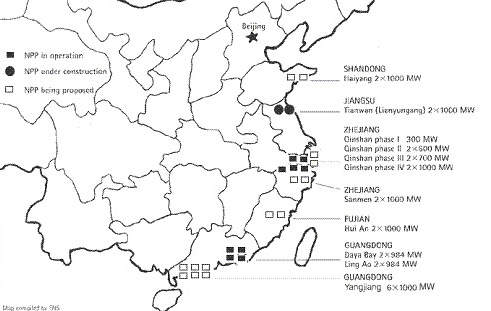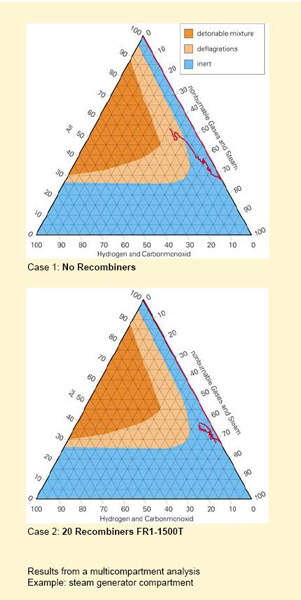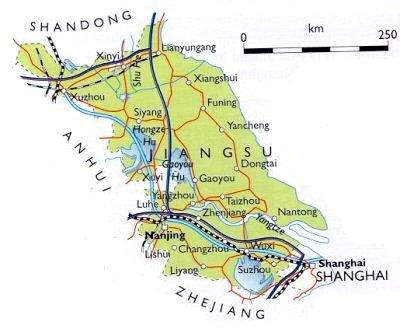The largest nuclear reactors ever built in China – Tianwan-1 and -2 – are now complete. The two Russian VVER-91 PWRs (Pressurised Water Reactors) have outputs of 1060MWe. They are located at Tianwan, in
Lianyungang City, about 250km north of Shanghai.
The plants are reported to cost above US$3.2bn, with China contributing $1.8bn of the total. They incorporate Finnish safety features and Siemens-Areva instrumentation and control systems.
The construction was the result of a cooperation agreement between China and Russia, and began in 2000. Unit 1 was connected to the grid in May 2006 and started operation later that year. Unit 2 began its operations in 2007. The completion date has been delayed because of corrosion in the steam generators. This has required the plugging of some tubes, losing around 2% of capacity.
A contract that included construction of the second set of nuclear power plants was signed between China and Russia in March 2010. The contract was signed between the Russia’s AtomStroyExport and China’s Jiangsu Nuclear Power Corporation. Both the reactors will generate about 1,000MW.
The new nuclear power plants will incorporate two VVER-1000 reactors at the Tianwan.
Pressurised light water reactors for Tianwan
The VVER-91 is an evolutionary advanced version of the VVER-1000 1,000MWe plant, which was itself developed from previous versions like the VVER-440. The VVER-91 is a pressurised light water reactor, and has a 40-year life. It has a steel-lined,
pre-stressed concrete containment structure. There are four coolant loops, with horizontal steam generators.
The VVER-91 has double concrete containment with a spray system, and an extra safety train. Severe accident measures include hydrogen removal. Extra safety features at Tianwan should prevent core damage for a number of additional accident conditions.
Severe accident management design meets IAEA and EUR recommendations.
The system uses recombiners from Framatome (now Areva). These have a metal housing to maximise gas throughput. The gas enters the recombiner at the bottom and leaves at the top. A cover on top of the housing protects the catalyst against
direct spraying of water and aerosol deposits. A number of parallel plates with a catalytic active coating are arranged vertically in the lower section of the housing.
A fire broke out in Tianwan 1 in August 2008, shutting the reactor. The safety systems worked correctly and prevented radioactive leakage. However, the incident has raised questions about nuclear safety in China, with several reported incidents during the year.
Plants a result of Sino-Soviet cooperation
The joint construction contract between China and Russia was signed in December 1997. The contract was signed by AO Atomenergoeksport (AEE) and VPO Zarubezhatomenergostroy (ZAES) of Russia and Tianwan Nuclear Power Corporation of China. Construction involved 400 Russian specialists who were housed nearby. Russian and Chinese officials signed a new protocol in January 1999.
Russia is responsible for project design as well as supplying, installing and calibrating equipment, and personnel training. China is responsible for engineering construction. The two units will be operated by the Jiangsu Nuclear Power Co. Ltd. This was set up jointly by the China Nuclear Power Industry Corp., Jiangsu Power Company, Jiangsu International Trust & Investment Company, and the China Huadong Power Group.
The project’s cost was originally estimated at US$2.5bn, but has now reached over US$3.2bn. A second phase of construction is also planned, for units 3 and 4.
Rapdily rising Chinese power demand
Installed power in China is above 500GWe. Most electricity (about four fifths) comes from fossil fuels, mainly coal, with the remainder mainly from hydro power. Demand in the country is growing rapidly, and despite recent double-digit percentage growth in supply, this has led to power shortages.
Most coal is located in the north and northwest of the country, and difficult to transport huge distances to the rest of the country. The coal-fired plants cause much of China’s air pollution and carbon dioxide emissions (after USA, China is the
second-largest contributor to power-related emissions). China causes around 15% of worldwide emissions, and this is expected to rise to above 20% by 2030. Most emissions come from energy generation.
The Chinese nuclear power programme started in 1970, with technology coming from Russia, France and Canada. China has nine nuclear power reactors now in operation.
Although nuclear power now only makes up about 2% of the total, the country is expected to add around 2GWe of nuclear capacity each year, taking capacity to 40GWe by 2020.
China now relies heavily on imported uranium. TVEL’s plant in Novosibirsk is supplying the initial nuclear fuel for the project, which is being stored at the TVEL plant until delivery to Tianwan.
China also plans to produce its own fuel, under licence from the Russian Atomic Energy Ministry.
Chinese nuclear power programme
China is developing its own reactors, heavily influenced by French designs. It is aiming to make PWRs the mainstream reactor type, and intends to manufacture as much of the plant and equipment as it can.
The nuclear reactors so far have produced about a thousand tons of spent fuel, but this will rise rapidly. High-level wastes will largely be vitrified and buried in repositories about 0.5km deep. Sites are now being selected, and should be finished by
2020.
Jiangsu Nuclear Power Corporation was established on December 18, 1997, and is mainly responsible for the construction and operation of Tianwan NPP. The corporation consists of following three shareholders: China National Nuclear Corporation (50%
share), China Power Investment Corporation (30%) and Jiangsu Guoxin Group (20%).

